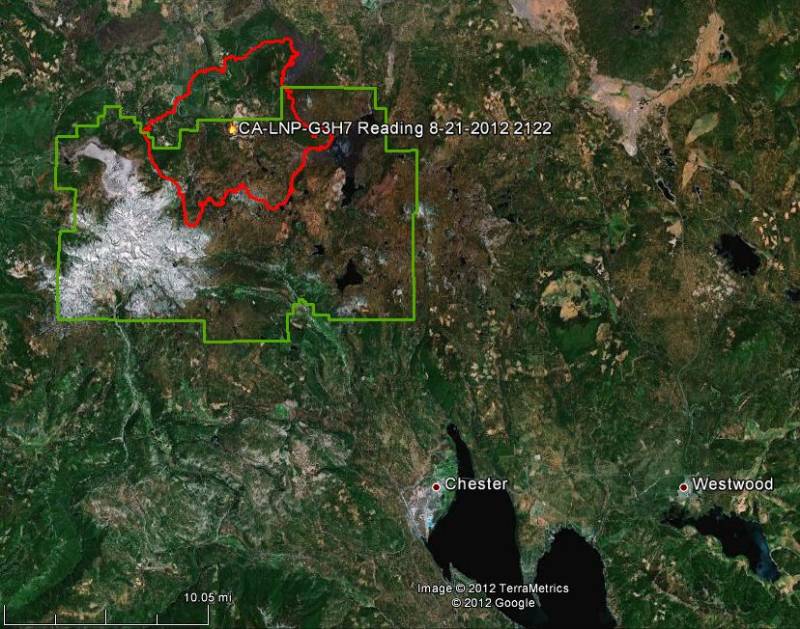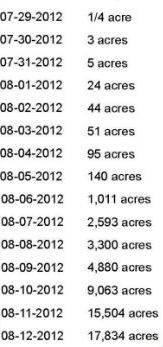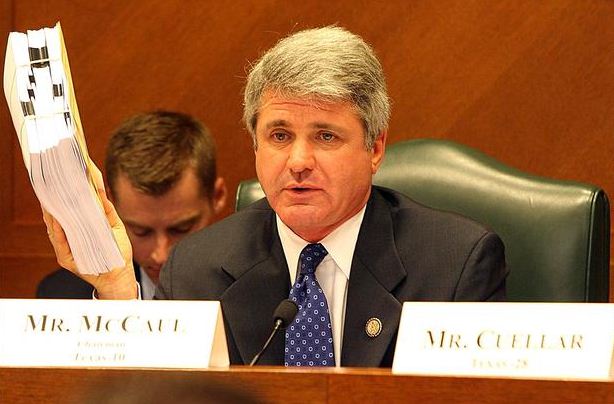
Two Congressmen held an informal hearing in Sacramento on Wednesday to hear concerns about the Reading Fire that started in Lassen Volcanic National Park in northern California. The fire was not aggressively suppressed, and later escaped the park and burned 11,071 acres of US Forest Service land and 75 acres of privately owned land outside the boundaries.

It started from lightning on July 23 and after about two weeks was only 95 acres while being managed for multiple objectives as a “fire for resource benefits”. Fire managers established a 700-acre box in which they intended to contain the fire by taking suppression action as needed to keep it from crossing the lines drawn on a map.

They were unsuccessful, and on August 6 it moved out of the park, ultimately burning 28,079 acres by the time it was contained on August 21. By August 23 the National Park Service had spent $15,875,495 observing, managing, and later suppressing the fire.
Some of the local residents said at the hearing that with the decline of the timber industry they now rely heavily on tourism. According to their testimony the fire had a negative impact on some of the local businesses during a critical time of the year for their revenue.
The list of government officials that testified at the hearing included:
- U.S. representatives Wally Herger, R-Chico, and Tom McClintock, R-Granite Bay
- Bill Kaage, the park service’s chief of the Branch of Wildland Fire
- Andy McMurry, CAL FIRE’s statewide deputy director
- Joseph Millar, director of Fire and Aviation Management for the US Forest Service’s Pacific Southwest Region
- Rick Kyle, Shasta County Fire Warden
- Steve Fitch, retired Forest Supervisor of the Shasta-Trinity National Forest
According to the Associated Press, Rep. Herger said:
The officials responsible for allowing the fire to burn during “a terrible fire season” should be removed and changes made to the national policy that uses managed wildfires as a tool to clear out forests and improve wildlife habitat.
Mr. Millar said in the hearing that the US Forest Service required all of their fires be aggressively suppressed last summer due to the severity of the fire season. However, the real reason may have been that the agency ran out of enough money to manage limited suppression fires for weeks or months.
CAL FIRE’s Andy McMurry testified that if the fire had started on state-protected lands they would have attempted to put it out immediately.
Retired Forest Supervisor Steve Fitch had earlier blasted the National Park Service for not aggressively suppressing the fire, saying:
I can’t believe they went ahead with letting a fire burn for the ecosystem’s benefit in a season that, for the entire nation, is record dry.
Of course with the benefit of hindsight, a person could assume that if the NPS had suppressed the fire when it was 1/4 acre, or two weeks later when it was 95 acres, it would not have spread outside the park and cost the taxpayers $25 million dollars, and would not have impacted the revenue the local businesses depend on in the summer.
The National Park Service has a mixed record when it comes to accepting accountability for serious mistakes. The Superintendent of Mount Rushmore National Memorial absolutely refused to do so in 2009 when protesters easily cruised through inadequate security measures to hang a huge banner over the sculpture. Superintendent Gerard Baker said:
Is it too bad it happened? Yes. Do I think it was my responsibility? Absolutely not. We did everything proper.
A few months later on the other hand, the acting Superintendent of Yosemite National Park Dave Uberuaga took full responsibility for the planned 90-acre prescribed fire that escaped and became the 7,425-acre Big Meadow fire:
I take full responsibility…I have apologized to the communities. I regret that we had to evacuate them. And I regret the situation we find ourselves in. Still, prescribed fire is a necessary tool in the park.
According to the Record-Searchlight, Lassen National Volcanic Park superintendent Darlene Koontz said in August that her agency apologizes for the “impacts” caused by the Reading fire.
NPS spokesperson Roberta D’Amico told Wildfire Today that the National Park Service has commissioned an interagency investigation which should be complete by mid-November. We will be anxious to see if the report concludes that the agency “did everything proper” in managing the Reading fire.
Thanks go out to Kelly






